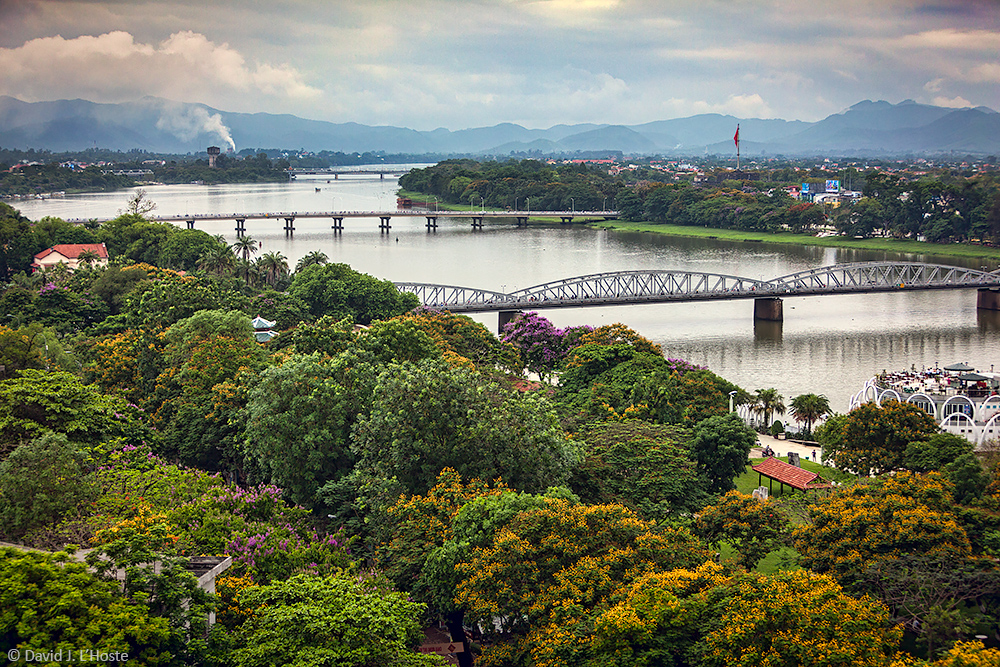

|
 |
| Perfume River (Song Huong), Hue, Vietnam. In 1802, Emperor Gia Long, founder of the Nguyen Dynasty, moved the capital of Vietnam from Hanoi (then known as Thang Long) to Hue and built his palace and citadel there. Hue remained the capital until the abdication of the Nguyen Emperor, Bao Dai, in 1945. During the American War, Hue was the site of fierce battles as the North Vietnamese Army took the city during the Tet offensive and held it for 25 days. More than three thousand civilians (intellectuals and South Vietnam sympathizers) were massacred during the occupation by Communist forces and the Citadel and Imperial City suffered extensive damages during the efforts by the South Vietnamese and American troops to win back the city. Wartime damage is still visible on the massive walls of the Citadel. The huge Vietnamese flag which flies over the Citadel is visible in the upper right of the image above. Hue was inscribed as an UNESCO World Heritage Site in 1993. (hu2734) |